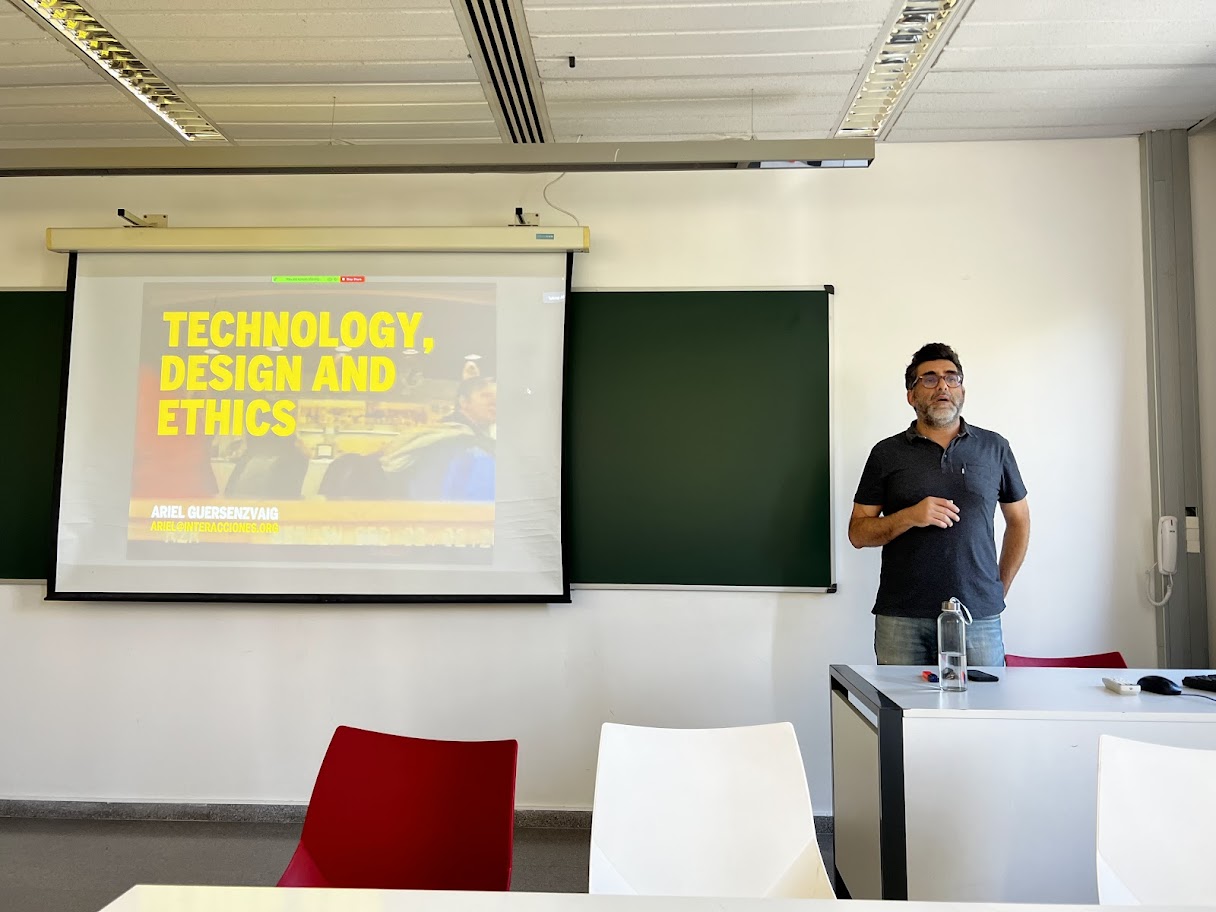Design Ethics
Design and Ethics, an intertwined relationship¶
Too Long Didn’t Read
This week, we concluded a two-day course on Design and Ethics led by Ariel Guersenzvaig, focusing on the deep interconnection between technology and human values. The class delved into the “Technosphere” and how technology, far from being neutral, is embedded with social, cultural, and ethical dimensions that shape societal values and power dynamics. Ariel challenged us to see technology not just as tools but as systems that actively mediate human relationships and reinforce or challenge social and gender inequalities. Discussions covered technological determinism and neutrality, urging us to consider who benefits from the technologies we design. The course also introduced various ethical frameworks, including “Sumak Kawsay,” advocating for a holistic approach to ethics that promotes ecological and communal well-being. This class significantly shaped my perspective, especially regarding how to embed sustainable and regenerative values in technology design.
Class Self Assessment: 09
This week we wrapped our two day course on the relationship between Design and Ethics led by Ariel Guersenzvaig. Our module explored the intricate relationship between technology and human values, emphasizing technology as a human endeavour deeply embedded in societal contexts. The class introduced the concept of the “Technosphere,” which encompasses all technological artifacts, from machines to mobility infrastructure, and how these reflect and shape societal values and power dynamics.
“The Technosphere is the realm of technology — machines, factories, computers, cars, buildings, the railway, all mobility infrastructure etc.” — Vienna Anthropocene Network
Ariel challenged the notion of technology as merely tools, advocating instead for an understanding of technology as systems imbued with social, cultural, and ethical dimensions. He highlighted how technology mediates human relationships and societal structures, arguing against the idea of technology neutrality. Technologies, he suggested, are not neutral but are designed within and can perpetuate existing social and gender inequalities.
Technology shows what a society, a community, or a group with power values as a positive and what is undesirable and should be avoided.
Through discussions on technological determinism and neutrality, we examined how technologies are not passive but actively shape human perceptions and actions. The class emphasized the importance of design in embedding values into technology, using it as a lens to question whom technology serves and the political and power arrangements it reinforces.
This was something I found particularly important, what particularly stuck with me was something Ariel said about the the way we understand what exactly is technology, and how this shapes our perceptions.
When we see resources as technology (i.e. seeing a river as a source for electricity) it’s the same way that we can end up seeing human beings as a source of human capital.
The same for the debate on technological neutrality and the implicit values, the class gave me a framework to position the role design plays in shaping the technologies we use, because surely technology can’t be neutral, as we see now even with the advent of AI and the biases that appear in the systems because of the training data that they use, as any technology is imbued with the values the creators had for it’s intended purpose.
It’s something I think that is super important to consider and also try to put into practical action, as a product designer it’s sometimes hard for me to acknowledge that for a lot of the history of this profession we’ve been creating future archaeology (which is incredibly arrogant I know), and that we need to shift to considering the whole life cycle of what we design at the beginning stages of its conception to make sure that we imbue what we create with the proper values that we hold dear.
We continued to explore the ethical role of design through various philosophical approaches, and Ariel introduced us to deontology, consequentialism, virtue ethics, and care ethics, each providing a different perspective on the moral implications of design choices.
What I particularly enjoyed and resonated with were the alternative frameworks like “Sumak Kawsay” or good living, which integrates indigenous worldviews and critiques of western capitalism, offering a more holistic approach to ethics that includes ecological and communal well-being.
Overall, the class urged us to critically engage with the ethical dimensions of technology and design, encouraging us to consider how their work as designers can foster more just and inclusive societies.
I found this class really interesting and especially helpful in understanding how to situate my project research — which uses big data technologies to create tools that visualise and communicate an individuals total daily energy (and embodied energy) consumption, in an attempt to highlight the sheer volume of energy we consume in a day — in the broader context of using technologies to shape system perceptions and the value we place to those systems.
The values I want to convey with the research I’m working on is one of sustainable and regenerative reduction, showing that technology is not something to be feared or used at the expense and exploitation of environment, but something that when designed properly and with the right intention and narrative be a force for positive good in the world.
